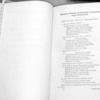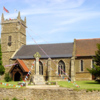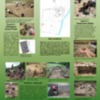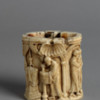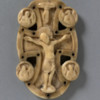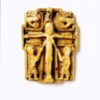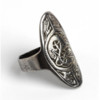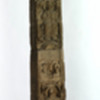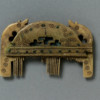Browse Items (507 total)
Sort by:
Oxford University English Faculty Exam Papers 1898
Oxford University English Faculty examination papers for Trinity Term, 1898.
The Church and the Devils
This is a novel, a murder mystery set in Northumbria around the time of the arrival of Christianity. It's loosely based on the history of Escomb church in Durham. I wrote it a long time ago; I don't know about its quality, but it was the fruit of a…
Lincolnshire Church Photographs
These photographs were taken by Wendy Parkinson and Paul Fenwick, and feature on Wendy Parkinson's site, Lincolnshire Church Photographs (http://www.wparkinson.com/Churches/Guide.htm), which provides an archive of images of churches from all periods…
Tags: Archaeology, Architecture, Building, Church, Religion, Stonework
Wallingford Burh to Borough Research Project 2009 excavations. Poster 8
This is part of a series of posters illustrating the work of the Wallingford Burh to Borough Research project, in collaboration with Wallingford Museum - excavations, research, geophysical survey, etc. This one shows the 2009 digs.
Tags: Archaeology, History, Settlement
Box (for host)
2009CB5776_jpg_l. Boxes like this are known to have been kept in cathedral treasuries. They were probably used as containers for the host (the consecrated bread) and the material reflects their important function. The unique narrative images at the…
Tags: Archaeology, Art history, Ivory, Religion, V&A
Pectoral Cross
2009CA7155_jpg_l. Pectoral crosses were worn on a chain or cord around the neck, and acted as charms to protect the wearer. The pectoral cross was commonly worn by bishops and abbots in the medieval period. The figure style and the particular…
Tags: Archaeology, Art history, Cross, Ivory, Religion, V&A
Crucifixion Panel
2006AM6059_jpg_l. This panel representing the Crucifixion was probably made in the late 10th century or early 11th century in England. The representation of the Crucifixion with Longinus and Stephaton alone, without the Virgin and St. John, as on…
Tags: Archaeology, Art history, Cross, Ivory, Religion, V&A
Ring
2008BT1827_jpg_l. The inlaid gold and filigree jewellery of the seventh century was largely replaced in the early eighth century by silver work as a consequence of the increasing scarcity of gold. The focus on silver gave rise to new decorative…
Tags: Archaeology, Art history, Jewellery, Ring, Silverwork, V&A
Easby Cross
2008BV1261_jpg_l. The monumental free standing cross was a phenomenon unique to the British Isles and Ireland, and this is one of the finest surviving examples. Carved with great skill, the decoration unites interlace patterns of the British Isles…
Tags: Archaeology, Art history, Cross, Religion, Stonework, V&A
Comb
2009CA7127_jpg_l. This is an Anglo-Saxon comb probably made in the 8th - 9th century. This comb is in bone with a single row of teeth, the top arched and terminating in recurved dragon heads. On each side are pierced bone plates incised with circles…
Tags: Anglo-Saxon daily life, Archaeology, Comb, Ivory, V&A

